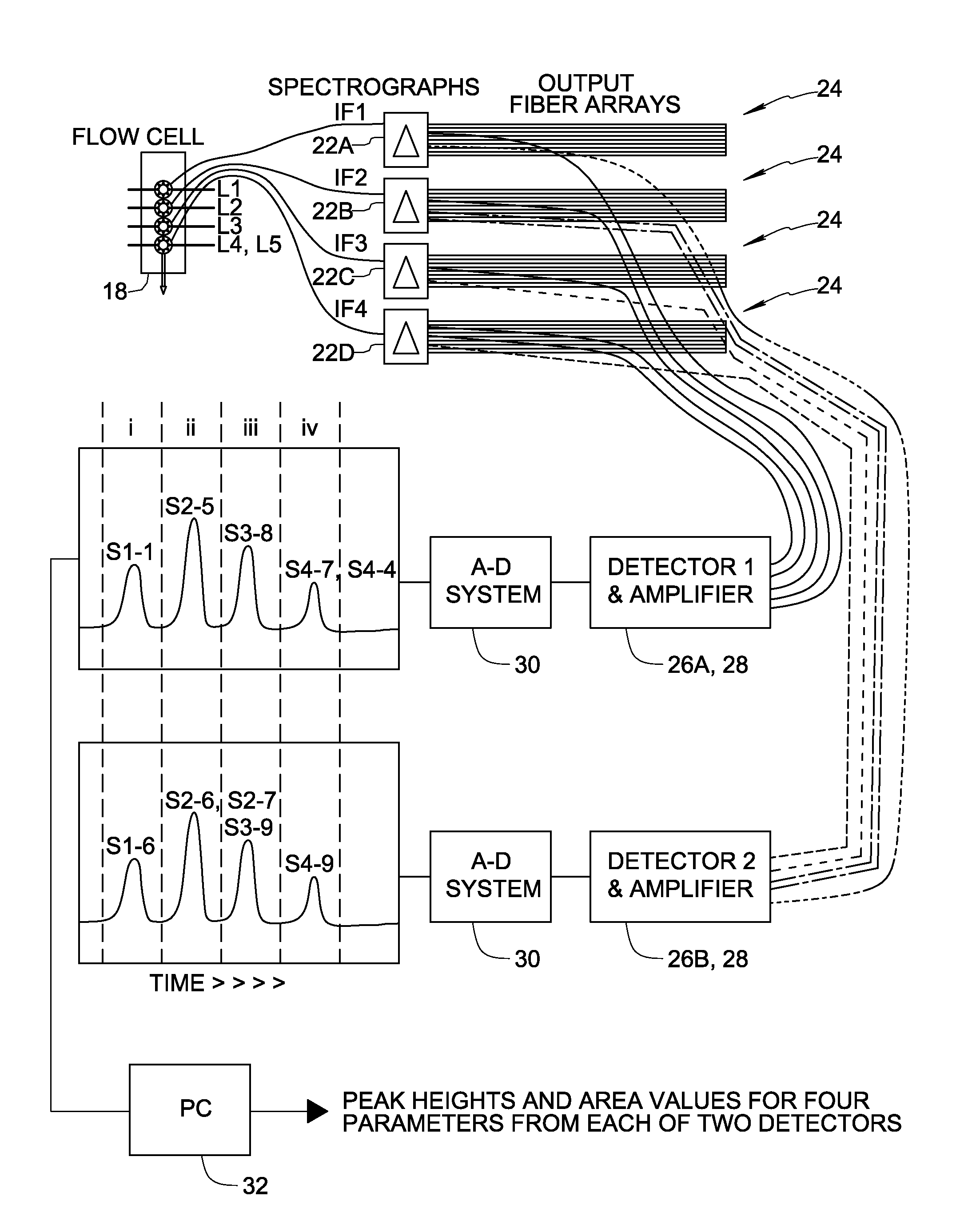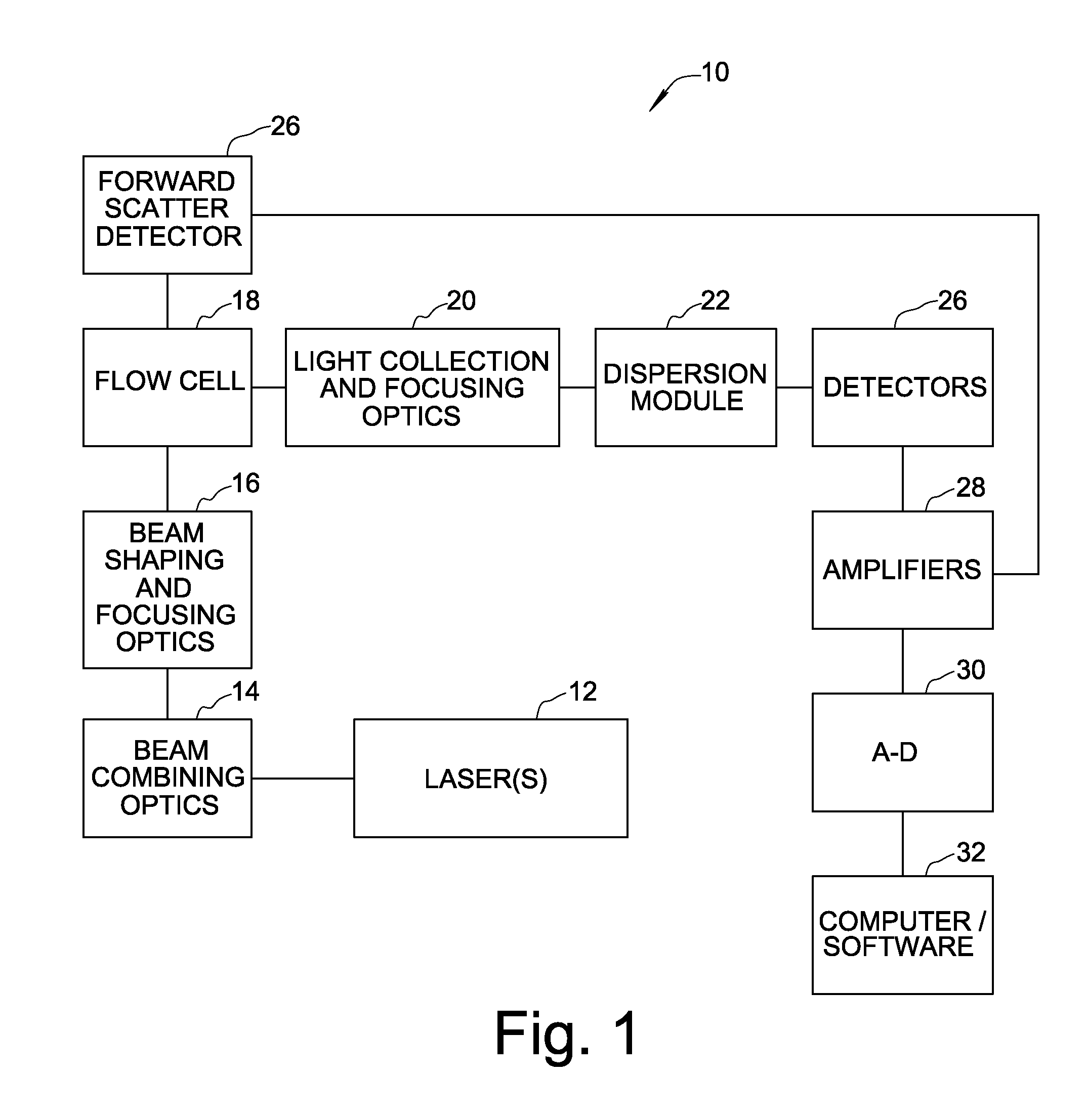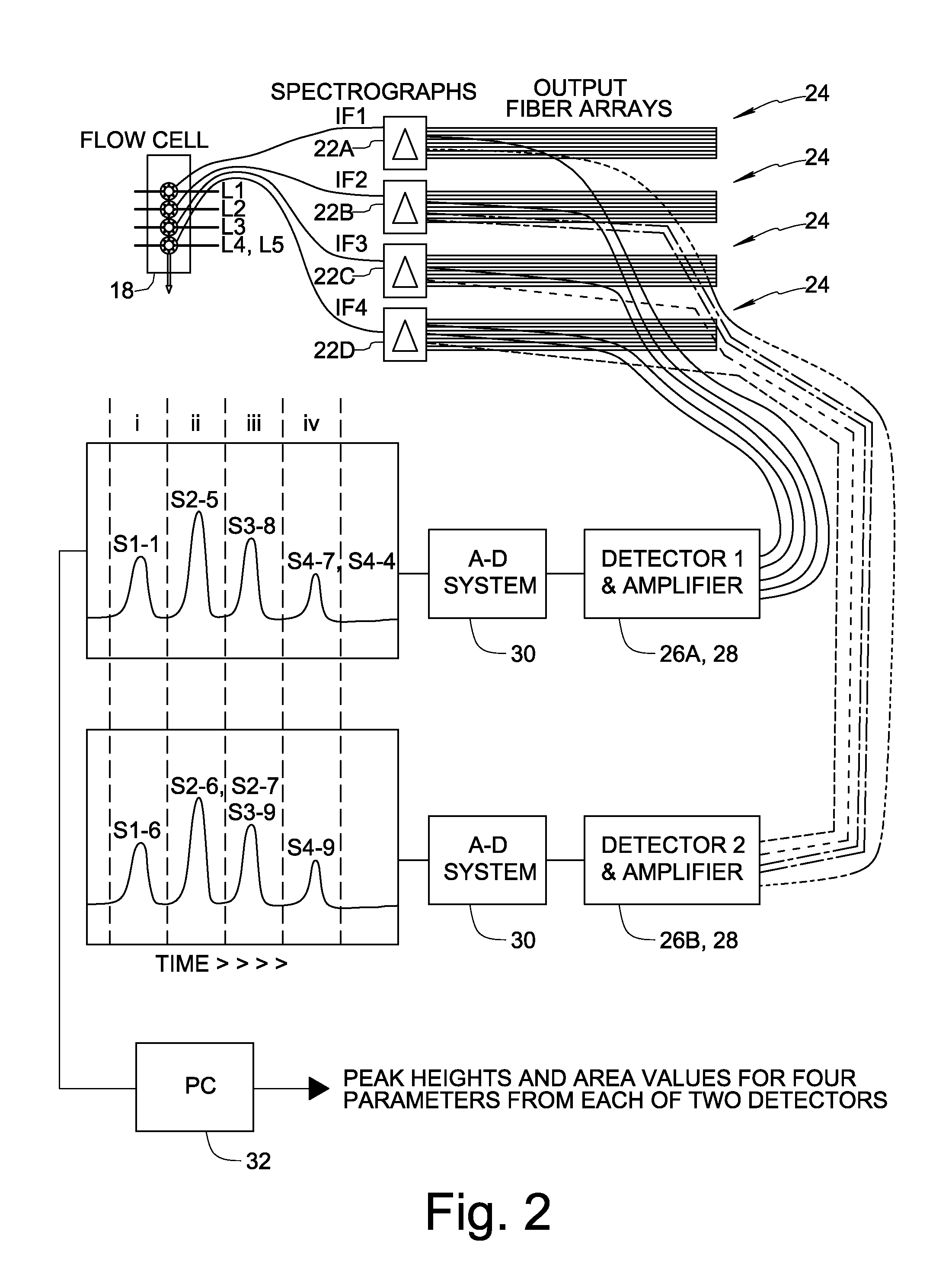Flow cytometer acquisition and detection system
a flow cytometer and detection system technology, applied in the field of flow cytometers, can solve the problems of large system size, poor quantitation, small sample size, etc., and achieve the effects of reducing optical losses, compactness, and facilitating greater coupling efficiency
- Summary
- Abstract
- Description
- Claims
- Application Information
AI Technical Summary
Benefits of technology
Problems solved by technology
Method used
Image
Examples
Embodiment Construction
[0031]FIG. 1 is a block diagram of a flow cytometer 10 formed in accordance with an embodiment of the present invention. Flow cytometer 10 comprises one or more lasers 12 used as excitation sources. The use of more than one laser is common. Beam combining optics 14 are typically used to combine the laser beams, and beam shaping and focusing optics 16 are typically provided to direct the laser beams to a stream of cells flowing through a flow cell 18. Laser light is scattered in all directions. Typically, light scattered in the forward direction (forward scatter) gives information different from that scattered at 90 degrees (side scatter). Both forward scatter and side scatter are commonly measured. Side scattered light and omnidirectional fluorescent light are collected and imaged using light collection and focusing optics 20 (primarily lenses) and efficiently coupled into one or more input fibers IF1-IF4 (FIG. 2). In one embodiment of the invention, light is collected from differen...
PUM
| Property | Measurement | Unit |
|---|---|---|
| wavelengths | aaaaa | aaaaa |
| wavelengths | aaaaa | aaaaa |
| emission wavelengths | aaaaa | aaaaa |
Abstract
Description
Claims
Application Information
 Login to view more
Login to view more - R&D Engineer
- R&D Manager
- IP Professional
- Industry Leading Data Capabilities
- Powerful AI technology
- Patent DNA Extraction
Browse by: Latest US Patents, China's latest patents, Technical Efficacy Thesaurus, Application Domain, Technology Topic.
© 2024 PatSnap. All rights reserved.Legal|Privacy policy|Modern Slavery Act Transparency Statement|Sitemap



